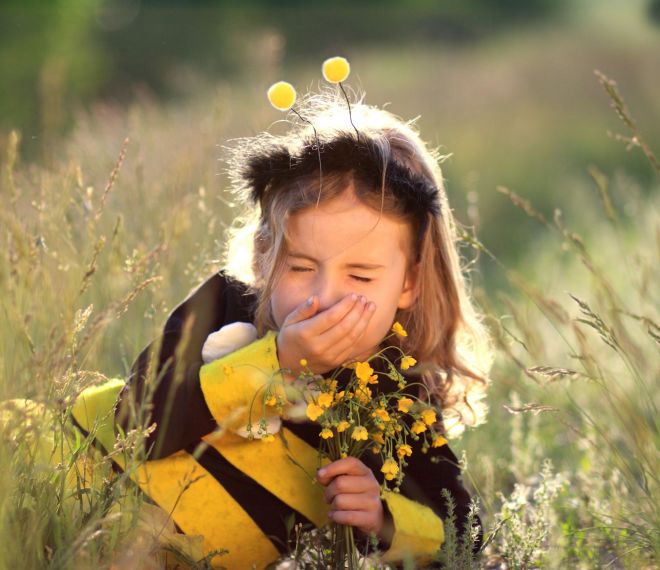It's spring, it's beautiful...the pollens are attacking!

40% of the world's population suffers from allergic rhinitis, but recently the incidence of asthma and atopic skin lesions has also increased.
We consider allergic diseases to be a disease of the modern age, but there are descriptions of the symptoms of hay fever from ancient times. John Bostock reported 28 patients in England in 1819. In the 19th century, Charles Harrison Blackley recognized the connection between the symptoms and pollen, and he also performed the first skin test.
The seasonal occurrences of plants that cause pollen allergies are presented below. In different parts of the world, due to the different nature of the environment, different plants cause problems, which is why the pollen seasons in different geographical areas are very different.
In Hungary, the pollen season is divided into three phases. Below , the ones that often cause complaints are marked in bold.
1.) The first stage lasts from the beginning of February to the end of April. This is the time for trees and shrubs to bloom. Among them, the most allergenic species are the following:
- The earliest blooming bush is the hazelnut . The drooping, 4-5 cm branches produce pollen grains in large quantities.
- This is followed by elm, poplar , candle, ash, willow, maple, sycamore, oak and pine.
- Birch , alder and yew appear later.
- Among the cypresses, common juniper is native to Hungary. Thuja is a type of cypress that is often planted in gardens and parks. If someone is allergic to one type of cypress, it is likely that they are also sensitive to the others.
2.) The second stage, the flowering of grasses from the beginning of May to the beginning of August. These include:
- The large family of grasses populates the entire Earth with about ten thousand species.
- These include ryegrass, knotweed , sedge wheat, fescue , ryegrass , rye, and cereals .
Grasses are common allergens. If someone is sensitive to one species, they would probably show allergic symptoms to the pollen grains of another species living on another continent.
3.) The third stage is the flowering of weeds, from the end of July until the onset of frost (until October):
- Weed pollen grains are extremely aggressive and can cause severe allergic symptoms.
- Ragwort is the most aggressive allergen, and it spreads its pollen grains from July to October. It comes from America, is unpretentious and spreads quickly. Even a single ragweed produces a huge amount of pollen grains, which results in thousands of ragweed pollen being released into the air every year.
- Nettles scatter clumps of pollen into the air.
- Other allergenic weeds are the lance- shaped eutium , the wild sorrel, the hogweed , and the gooseberry .
- Black wormwood is a very strong allergen among the nesting flowers, which creates human-high thickets in neglected areas.
The development of allergic diseases is caused by a complex interaction of genetic, environmental and lifestyle factors. The effect of climate change on the flora is presumably the cause of the higher incidence of allergic diseases.
Among the symptoms, the most typical are a runny nose, sneezing, itchy eyes and nose, nasal congestion, coughing, and suffocation. In case of prolonged symptoms without fever, it is worth having an allergy test performed. If we know the plants that cause allergies, it is easier to avoid them and to take appropriate anti-allergy medicines at the critical time. You can read about the possibilities and importance of the treatment in another article by the doctor, by clicking here .
Below are pictures of some allergy-causing plants:
 |
Stamens of hazelnuts
 |
Grasses
 |
Ragwort
 |
Black wormwood
 |
Wild sorrel
Poplar flowers only cause allergic symptoms for a short time, and poplar fluff - contrary to popular belief - does not cause allergies, it only mechanically irritates the nasal mucosa. The positive effect of the plant, on the other hand, is that its canopy and leaves filter harmful substances (for example, pollutants emitted by cars) from the air. A 50-year-old tree can "absorb" up to 405 kg per year! So their air-purifying effect is more important than the discomfort caused by lint.
 |
Poplar fluff
Below, we present the periods of flowering, i.e. the allergenic effect of various domestic plants, the so-called pollen calendar (source: ANTSZ).
 |
If you would like to book an appointment for a pulmonary specialist examination, you can do so via our telephone customer service at +36 1 790 7070 or online !
Get to know our pediatric pulmonologist:
